
CYBERNETIC FUTURE OF AMAZON
Sector
Mega Structure
Location
Seattle, WA
Year
2022
Instructor
Farzin Lotfi-Jam, Christopher A. Battaglia
Team
Jialiang Huang+Jun Hu+Shujie Liu
Introduction
The issue of data privacy is currently a pressing concern, particularly as data surveillance mechanisms remain opaque. The uncertainty surrounding these technological black boxes prompts us to seek ways to understand their workings, leading us to investigate the relationship between Amazon Go and data surveillance. Amazon Go presents an opportunity for the tech giant to engage in surveillance capitalism, where personal privacy is compromised and reshaped by algorithm-driven capitalism.
Our design involves a public architectural space within an Amazon-owned megastructure, functioning as a museum to expose the concealed processes of data surveillance to the public. This megastructure is crafted based on Amazon's vision, incorporating inputs such as patents and announcements. These inputs are translated into program spaces and arranged in a viewing sequence designed for users. The sequence is then transformed into a serially connected space syntax, involving ascents, descents, jump cuts, and loops. The overall navigational experience within the space is theatrical, showcasing how Amazon patents could function and the facility's operations. While information surveillance may be an inevitable aspect of our technologically advancing future, our commitment to privacy cognition should not be entirely relinquished. We envision that our design can evoke a collective awareness through performative spatial designs.

Trigger Event: As an unmanned supermarket, Amazon Go collects information through technological means to monitor consumers' every move in real time. This model subsequently triggered people's thinking about information security.

Amazon Go Loop System: This diagram shows how different technologies involve in Amazon Go and by integreting them into four sections, the unmanned supermarket is achieved.
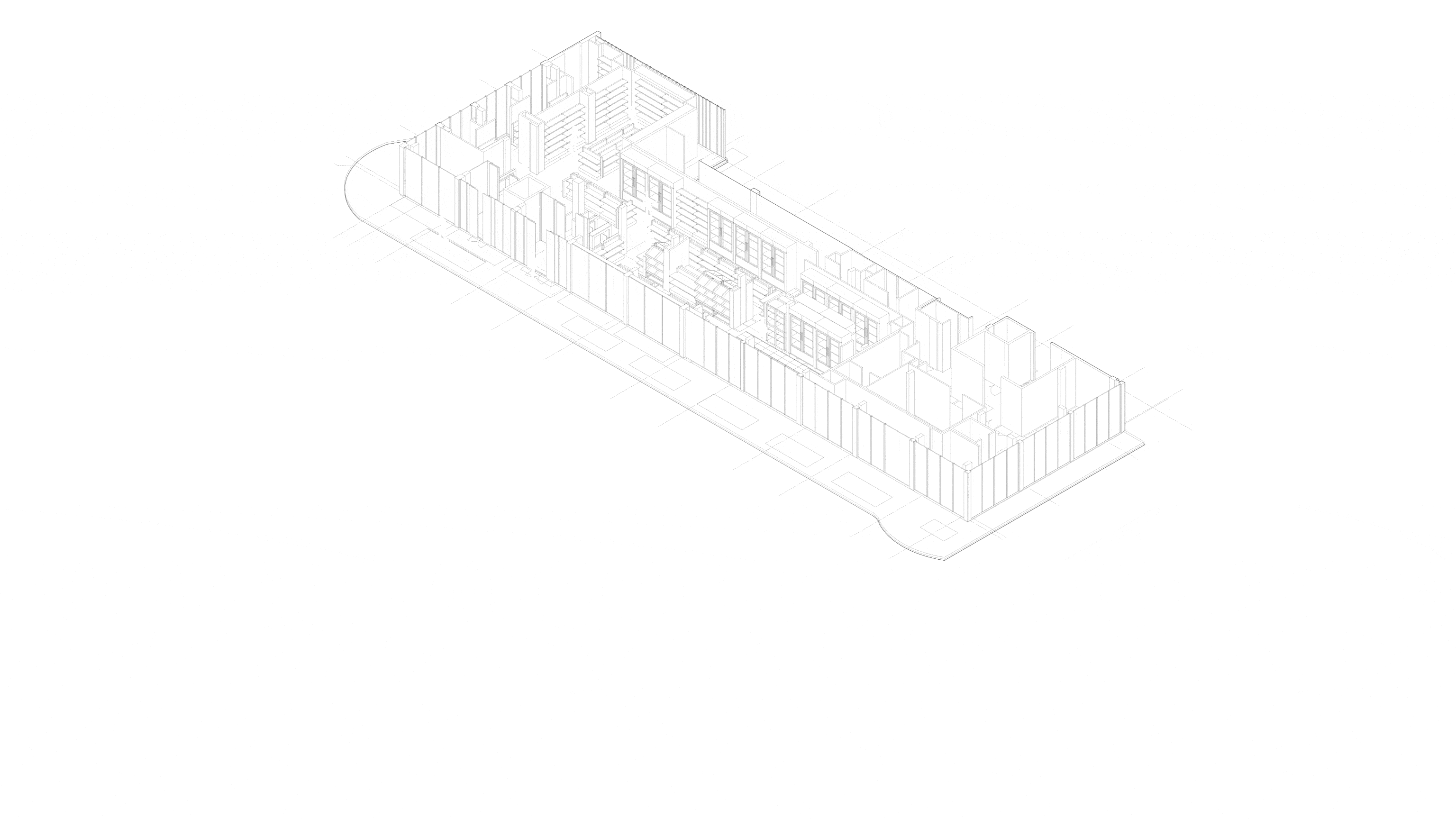
"The diagram shows the process flow of a shopper from entering to leaving an Amazon Go supermarket. At each step, their personal information, actions, biological data, and selected items are collected and monitored by various devices and instruments. This data is immediately transmitted to Amazon's data center for centralized analysis and processing."
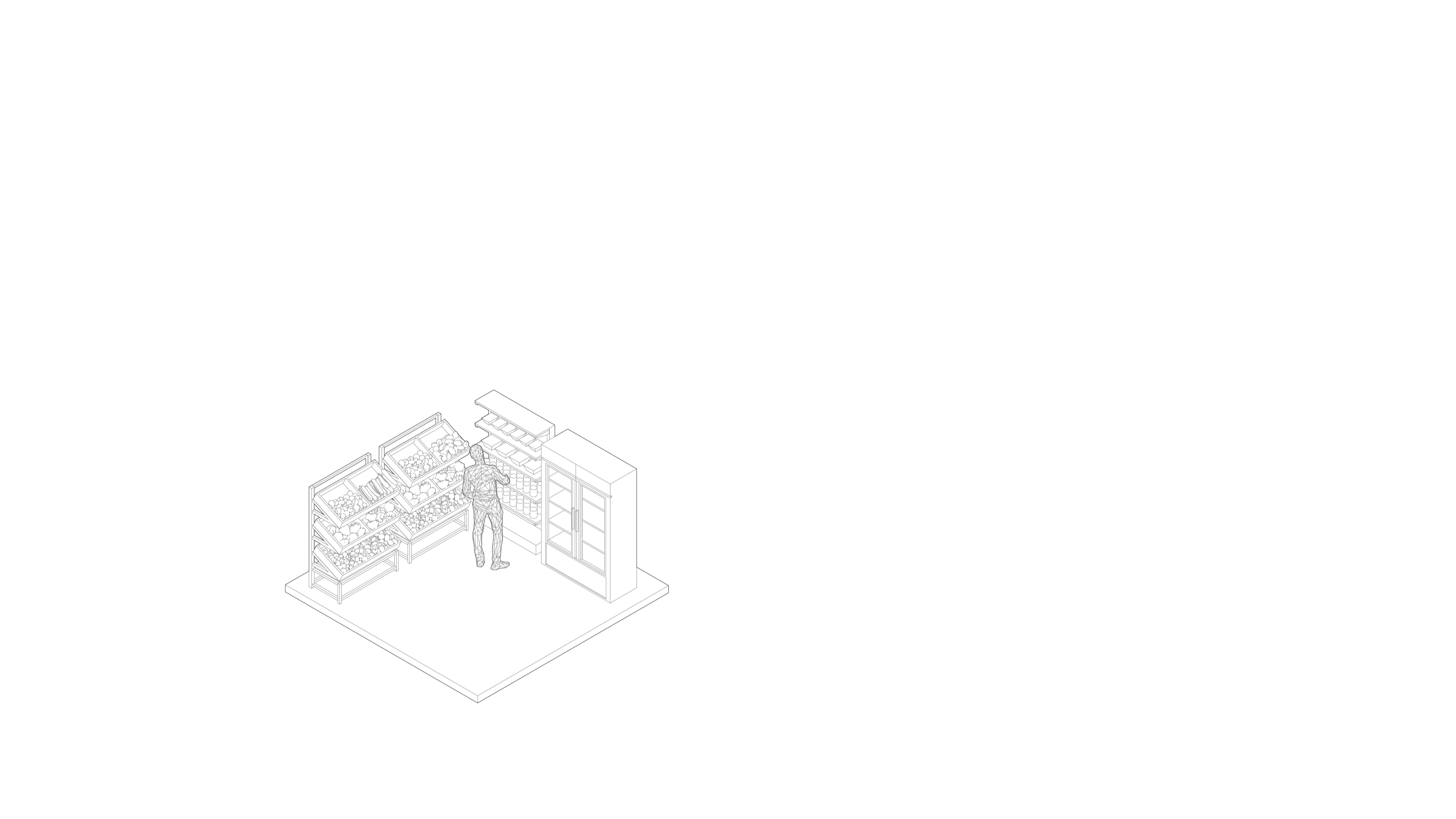
The identification of biological information helps distinguish each consumer, as features such as fingerprints, voice, and facial characteristics are nearly impossible to replicate and unique. The capture of action information will be used to determine the effectiveness of purchasing goods. Ultimately, the product, amount, payment method, etc., will be transmitted through the network to the mobile terminal for the convenience of the customer.

Data centers are often not located in the same place as Amazon Go supermarkets because of different hardware requirements. Data centers require a significant amount of space and strict security measures. Data is extensively analyzed through machine learning and artificial intelligence, ultimately presenting the "shopping" behavior in digital form. It can be said that the data center plays the role of the "brain" in the Amazon Go system.

Taxonomy of Hardware Device
The sole purpose of these hardware facilities is to collect various types of information."

APP
Customer's Profile Information & Data Flow

Device Location
The ceiling and shelves are filled with installed detection devices
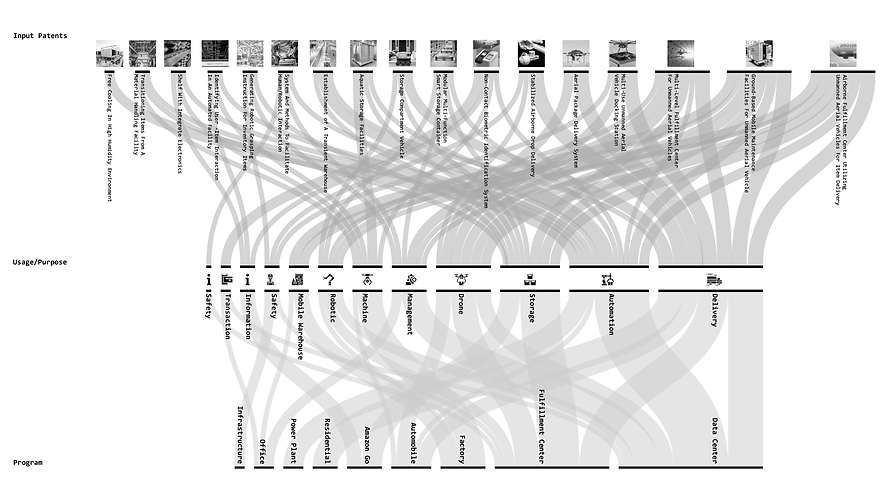
Patent Flow Diagram
In order to develop this technology, Amazon has researched and developed a large number of patents, with some already in use, while the rest are still in the testing and experimental stages.
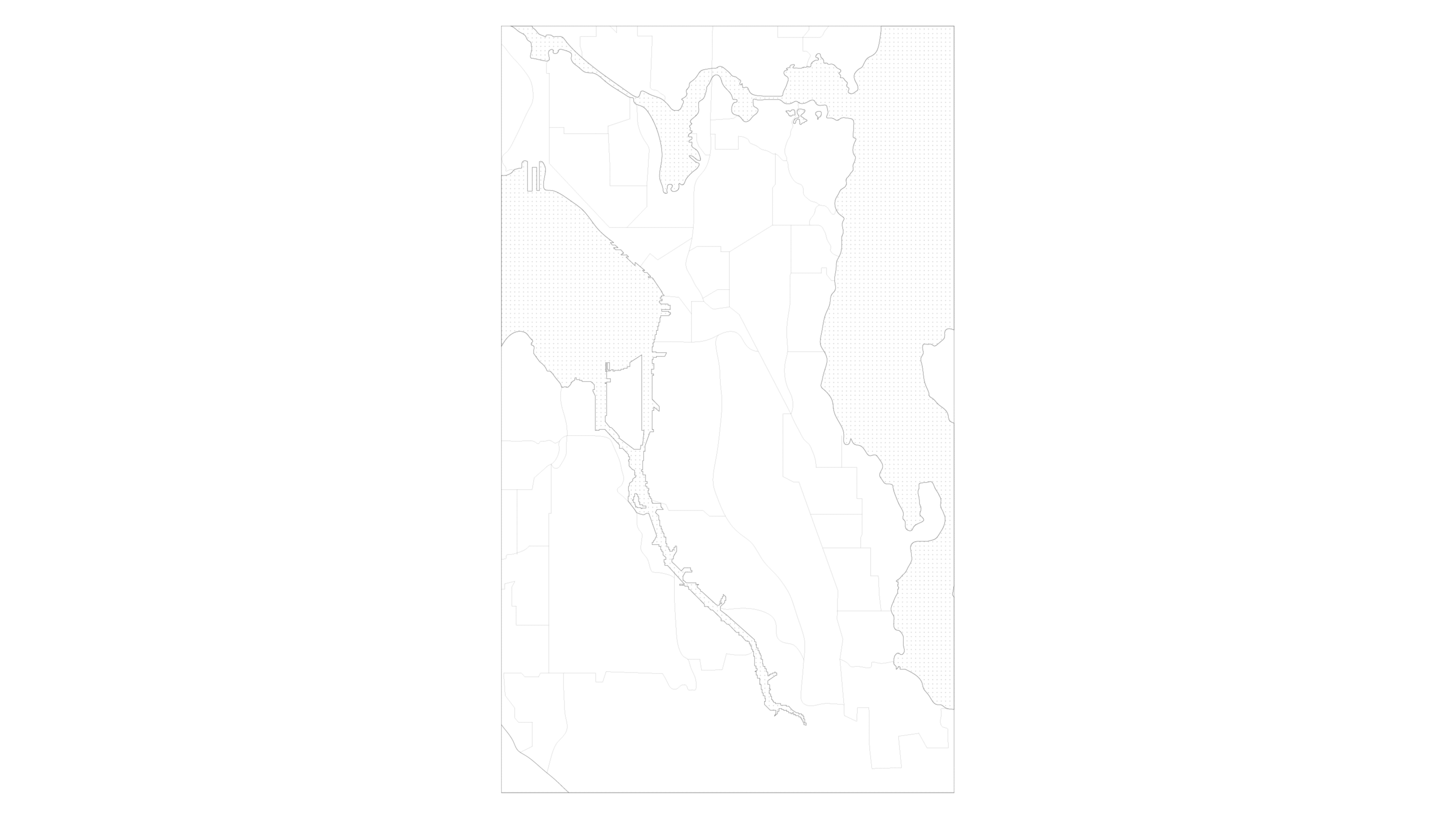
Facility Location Map
Ambition & Future

Based on Amazon Go and its released patents, we envision an ambitious future - Mega Structure The megastructure surpasses the conventional limits of a building, exerting its influence extensively beyond physical boundaries, spanning across the city and even the nation. In our envisioned future, illustrated in the axonometric drawing of Seattle, the upcoming patents from Amazon significantly contribute to molding the daily lives of the city's residents. In this envisioned setting, Amazon quantifies and evaluates every facet of human existence, encompassing behaviors, emotions, and social interactions, essentially transforming human experiences into quantifiable entities. This notion of 'Amazon Priceifying' human elements underscores a profound and far-reaching impact on society.
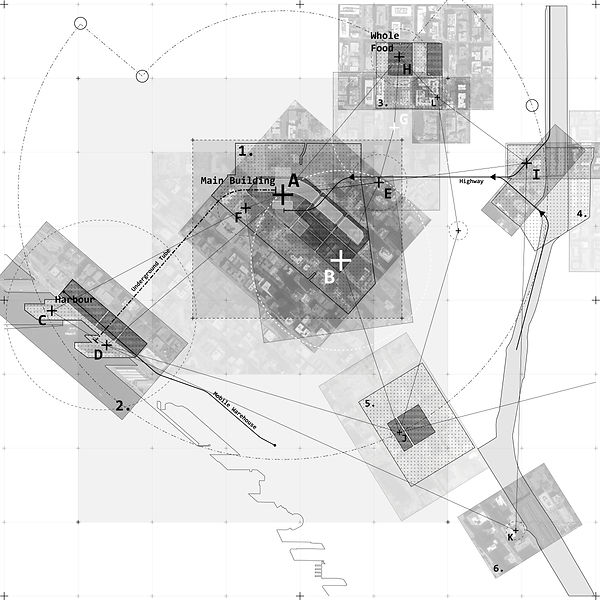
Network Map of Amazon Go Infrastructure based on Seattle.
The infrastructures included:
Stores (H&E)
Drone Center (I)
Headquarter (A)
Harbor (C&D)
Data Center (B)
Factory (F)
Distribution Center (J)
Train Station (K)
Underground Tunnel & Viaduct

Plan

Section 01
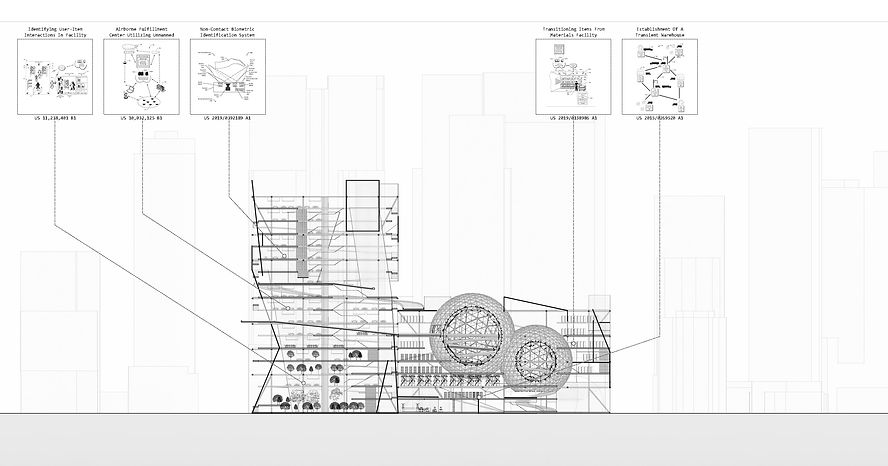
Section 02
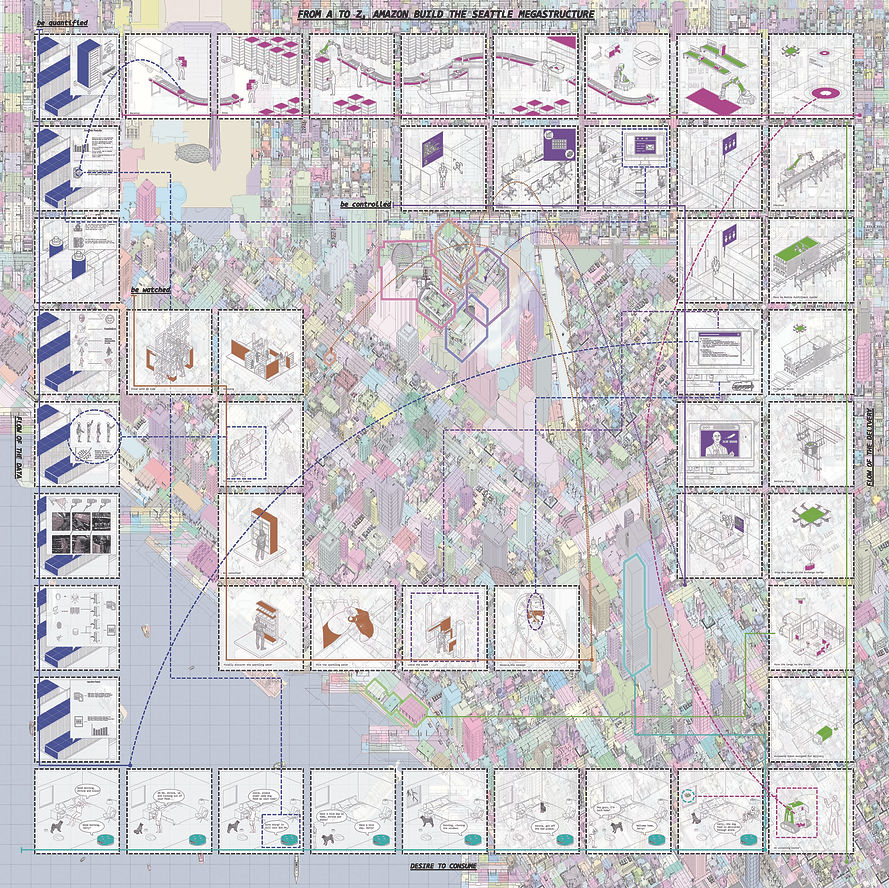
Mega Isometric
We examine the unique characteristics, technologies, and human engagements associated with each patent to comprehend their purposes and potential applications. After this analysis, we categorize them into suitable spatial programs where they can be seamlessly incorporated into the urban environment. Next, we evaluate the spatial requirements essential for the efficient operation of these facilities. These patents are then interpreted as diverse types of spaces, collectively forming a larger, unified structure that harmonizes with the cityscape. This systematic method guarantees that each patent is strategically positioned within the overall design, enhancing both the functionality and aesthetic appeal of the megastructure.



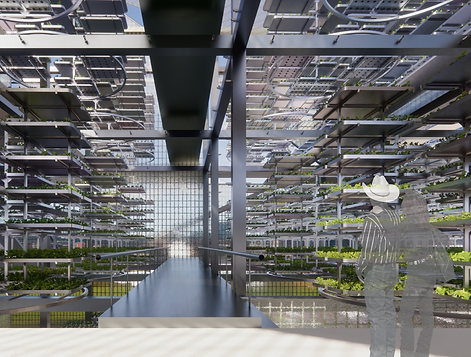
Renders